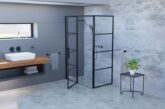
Sophie Weston, Head of Marketing at Geberit, takes a closer look at unwanted acoustics in the home and the importance of designing out the noise.
The built environment is becoming more aware of noise pollution particularly when it comes to new builds and developments. Noise Impact Assessments are becoming increasingly commonplace in planning applications and require that any new development is not adversely impacting on residential or commercial properties located nearby.
However, less consideration is given to the effect noise can have on residents’ health and wellbeing. The World Health Organisation, which has been tracking noise levels for over a decade, describes noise pollution as an “underestimated threat” that contributes to everything from stress to high blood pressure, cardiovascular disease, dementia, diabetes, and hearing loss.
It’s also easy to assume that unwanted noise only comes from outside world, but this couldn’t be further from the truth. Rapidly increasing numbers of connected devices, poor end-user awareness and lack of clarification in UK standards and Building Regulations can also contribute to unnecessary acoustics in the home. Some argue that external sound insulation has also amplified noise within the home, highlighting internal noises more than ever before.

The issue at hand
Research from Geberit in a previous white paper1 found that 38% of people reported that indoor noises – such as sounds from electrical appliances, bathrooms, or heating systems – affect them more than external traffic noise.
In the bathroom, 28% of people are frequently disturbed by bathroom sounds at night or while trying to relax, and 19% of homeowners are regularly disturbed by sounds like flushing toilets, running taps, or pipe and drain noises. Over half of the respondents (51%) say unwanted noise negatively affects their well-being.
A major part of the problem is the lack of clear guidance within UK regulations regarding the products needed to achieve specific sound levels, especially in relation to water and bathroom noise. The BSI’s British Standard 8233 (2014) Guidance for Sound Insulation and Noise Reduction simply states that water systems – including hot and cold water services and waste pipes – should not cause disturbance during normal use. However, this brief guideline is the only reference to managing sanitary noise in buildings.

The UK Building Regulations are not much clearer. The 2010 Approved Document E on ‘Resistance to the passage of sound’ primarily focuses on external sound control. While it states that walls and floors should reduce noise transmission to neighbouring rooms by at least 45 decibels, it does not establish a maximum noise level nor does it specify the use of acoustically optimised products.
Sound solutions
The onus, it seems, is on builders to make well-informed choices to reduce the impact of noise inside the home and, in turn, increase wellbeing. There are a number of UK products that help reduce the impact of noise in bathrooms, such as sound-optimised drainage pipes which minimise noise from flushing water, sinks, or showers. Similarly, wall-hung toilets with concealed cisterns help prevent sound from traveling through walls and floors.
However, there are no specific UK standards regarding noise pressure from water systems in new buildings, meaning there’s no requirement to meet a minimum threshold for noise. This is not the case in Germany, however, where the DIN 410 acoustic standard sets clear limits on acoustic levels within buildings, including maximum sanitary noise at 30 dB(A) (LAFmax, n).

The UK also lacks a defined approach to testing, which makes it difficult for different parties in building projects to collaborate on ensuring optimal acoustic performance—something that is standard practice for other aspects like heating or energy efficiency. While some leading manufacturers, like Geberit, adhere to the higher German standards for products sold in the UK, there is no overarching UK standard to guide their approach or testing methods.
This lack of regulation remains a challenge for specifying acoustically optimised solutions across a building. Research shows that noise in the home is a growing concern for many homeowners, so it’s time for the UK to reconsider its standards. By setting clear noise pressure limits and establishing a standardised approach to testing, the industry can work together more effectively, delivering better results for homeowners.
To view the Geberit White Paper ‘A Sound Solution’ visit ‘A Sound Solution – Embedding Acoustics into Building Design’.







